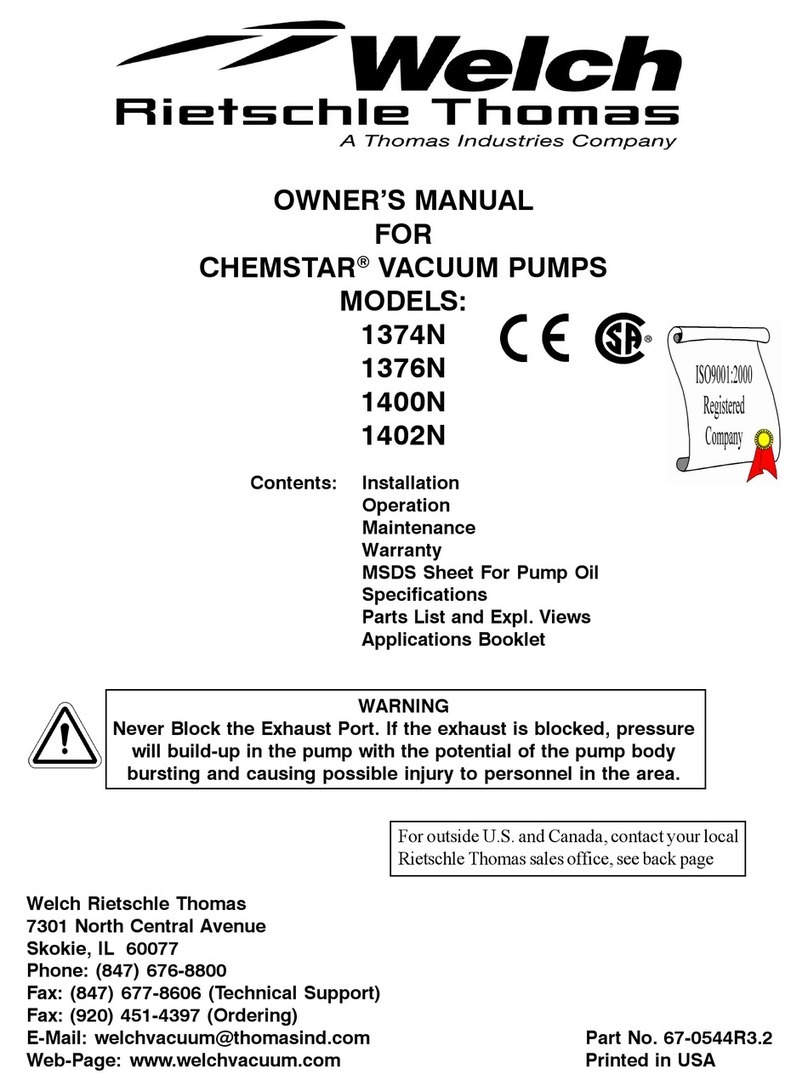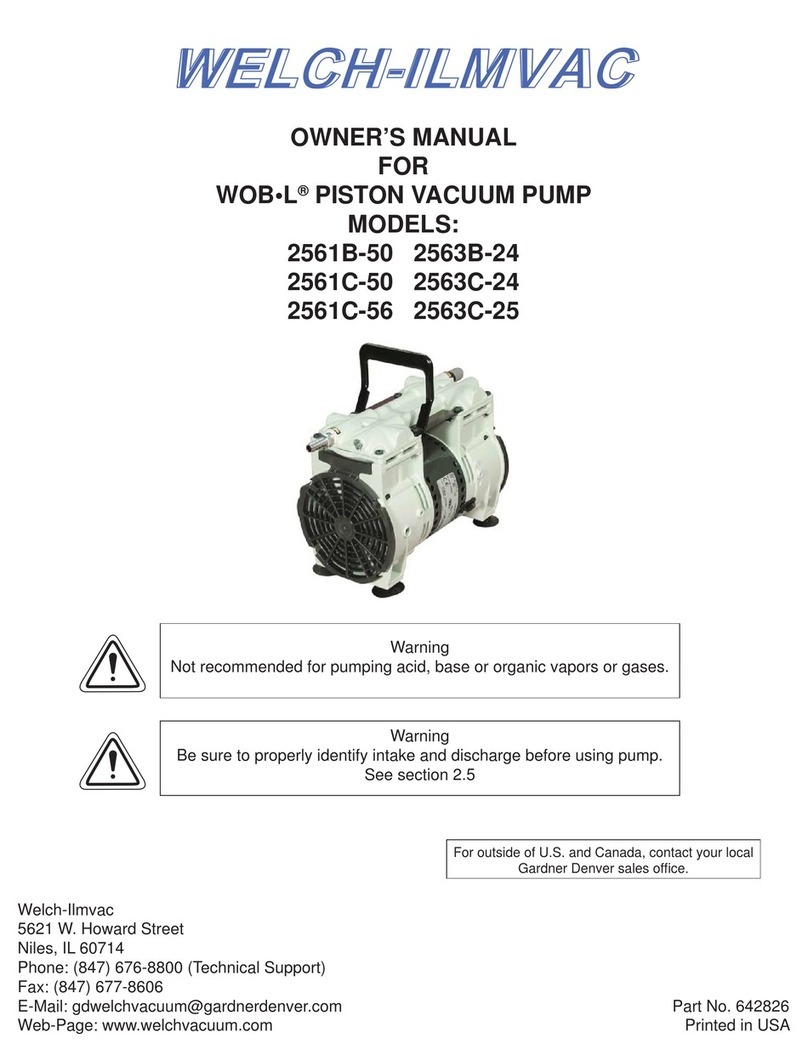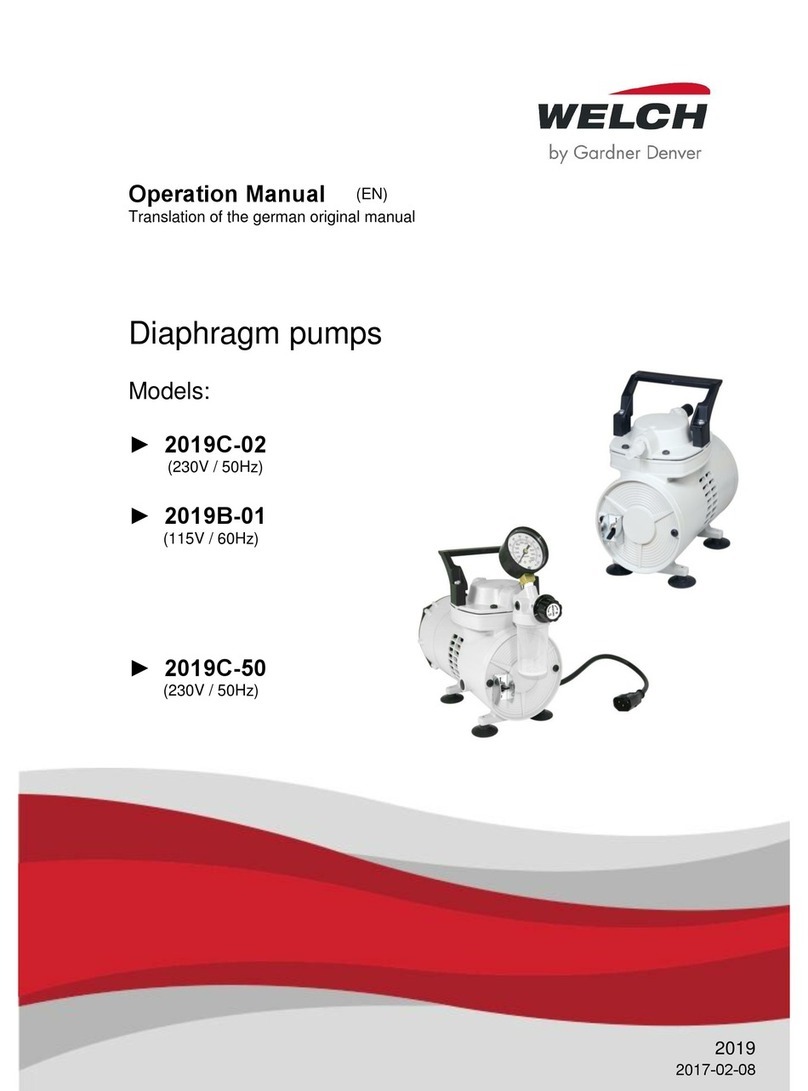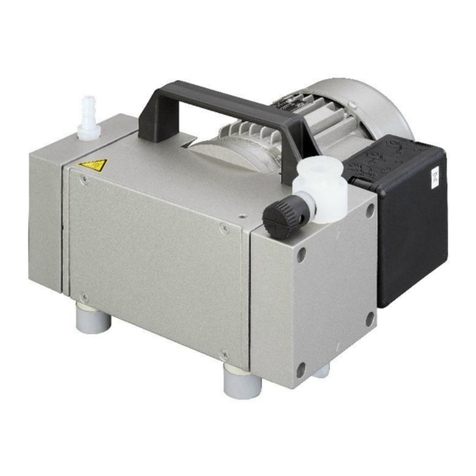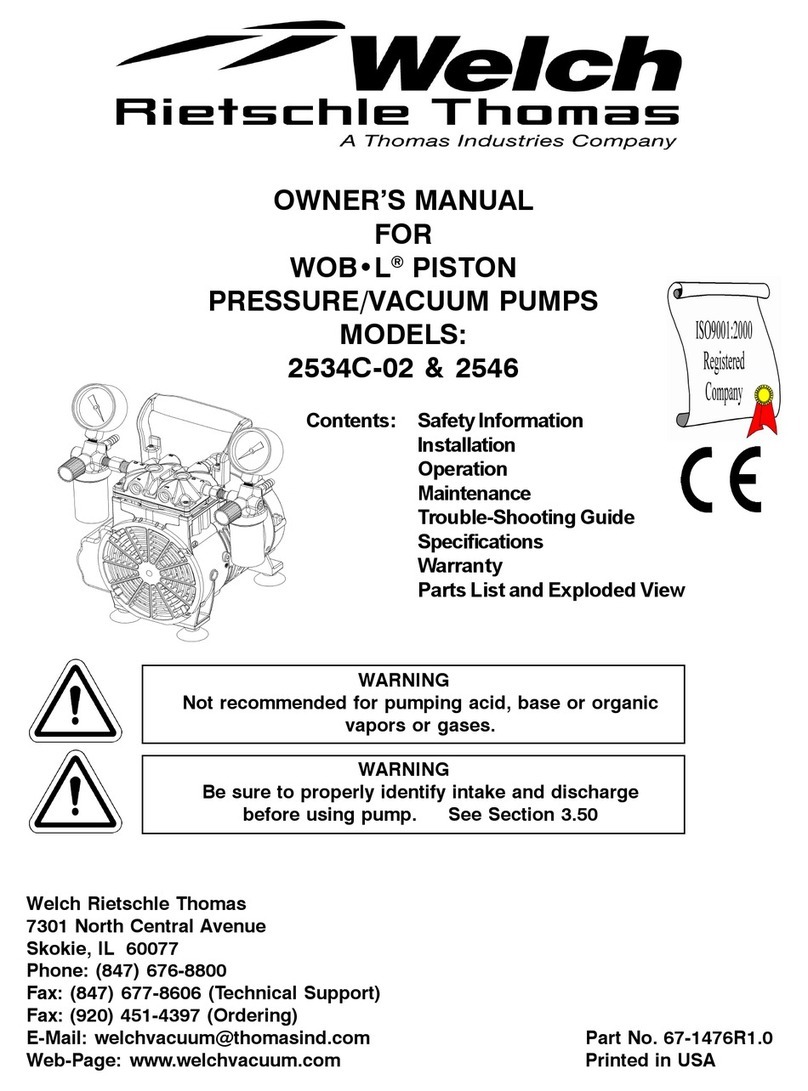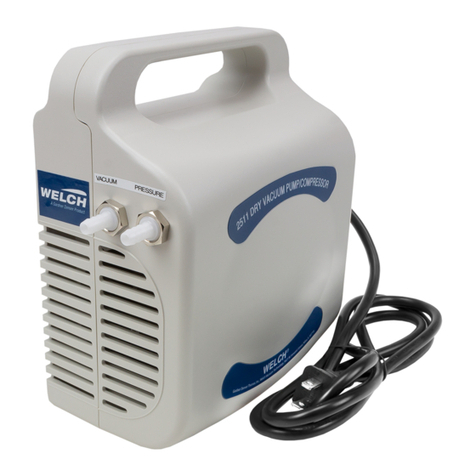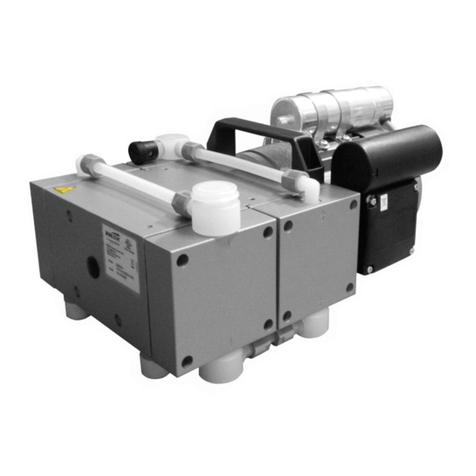
9
2.03 Effects of Continued Pressure Reduction
The quantity of gas in the vessel (6) is reduced with each evacuation cycle. The gas remaining in the
vessel expands to ll the vessel and consequently with each cycle the pressure in the vessel is reduced.
This is a manifestation of Boyle’s Law which states that, for a constant temperature, the volume of a
body of gas is inversely proportional to its pressure; i.e., if the volume is enlarged the pressure must be
reduced.
As the amount of gas in the vessel is steadily diminished, its pressure is correspondingly reduced. The
action of the pump must therefore compress a successively smaller quantity of gas with each cycle to
something greater than atmospheric pressure in order to expel it from the pump.
At the beginning of an evacuation sequence, the compression ratio is very small. In the rst cycle of
operation the pump draws in a volume of gas at atmospheric pressure and expels it at approximately
atmospheric pressure. In contrast, near its ultimate pressure, a pump draws in gas at (for example) 30
millitorr and must compress it to more than 760,000 millitorr (atmospheric pressure) in order to expel it
from the pump. Since the exhaust valve is generally spring loaded to provide a good seal, the pressure
required to open it is somewhat greater than atmospheric pressure. Therefore, at an ultimate pressure
of 1.3 x 10-4 mbar 0.1 millitorr, (1 x 10-4 Torr) the compression ratio performed by the pump is greater
than 1,000,000 to 1.
2.04 Ultimate Pressure
As described previously, a quantity of gas is removed from the system with each cycle of the pump.
Therefore, the pressure of the gas remaining in the system is reduced with each pump cycle. Since the
pump can remove only a small portion of the gas with each pump cycle, it is obvious that this method of
evacuation can never completely remove all the gas in the vessel. In addition to this, all the components
of the system contain minute sources of gas leakage which are impossible to seal completely against
atmospheric pressure. Outgassing of materials within the system provide additional sources of gas.
As a result, after prolonged pumping, a state of equilibrium is reached in which the gas introduced from
all the leakage sources is balanced by the ability of the pump to remove gas from the system. This state
of equilibrium is referred to as the ultimate pressure or blankoff pressure of the pump and its system.
No matter how much additional pumping time is provided, no further reduction in system pressure will
be accomplished once ultimate pressure is attained.
2.05 Pump Mechanism Description
This vacuum pump incorporates two in-line rotary-vane stages with interconnecting ports. When in
operation, the intake stage is at lower pressure and the exhaust stage is at higher pressure relative to each
other. Each stage contains a rotor assembly consisting of a rotor with two vanes and a stator. The two
rotors are combined on one shaft, and the two stators are combined in a common housing. The pump
shaft turns the rotors, causing the vanes in each section to sweep the surface of their stators. The vanes
are pressed against the stators by centrifugal force.
Each stage has an exhaust valve. Gas expelled from the rst stage exhaust passes through an interstage
port to the intake of the second stage. The second stage compresses the gas further, then expels it from
the second stage exhaust valve to the atmosphere.
An adjustable gas ballast valve is located in the pump’s exhaust stage. The purpose of the gas ballast is
to reduce or eliminate vapor condensation in the pump. The function of the gas ballast valve is
described later in this section.
The pump is mounted inside an oil case which is a reservoir for the oil that lubricates the pump. The
electric motor shaft drives the pump shaft via a coupling. There is a coupling body on the end of each
shaft; a coupling spider between the two coupling bodies transfers the power from the motor shaft to the
pump shaft.

